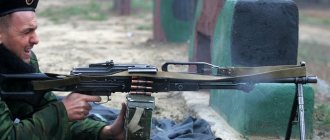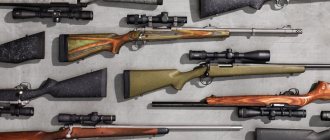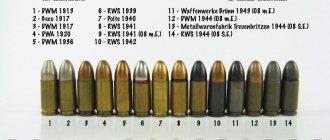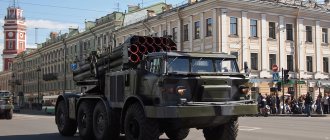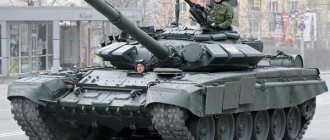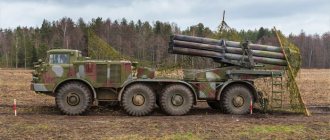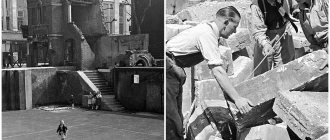The first military trucks were significantly different from what is being created now. Even during the Great Patriotic War, so-called multi-purpose vans, various kinds of staff vehicles and mobile repair trains gained particular popularity.
It was the war that accelerated the development of mechanical engineering, and also subsequently brought it to a higher and more advanced level. In order to satisfy all the wants and needs of the army, specialized vehicles are needed. Thanks to the interest of the military departments, vehicles such as military trucks were produced at incredible speed, and each time they became more and more advanced.
When compared with the first examples of technology, modern transport seems something unusual and high-tech.
History of development
Initially, the car was developed by the ZIL enterprise, and the ZIL-135 L model differed from other vehicles of the enterprise by the presence of an automatic transmission. The 135th model has a hydromechanical gearbox with six shift stages. Initially, such units were developed and produced by one of ZIL’s highly equipped instrumental subsidiaries.
BAZ could not make such GMPs due to the lack of specialized equipment; it was for this reason that it was urgently necessary to create a new transmission. This time the car was equipped with a five-speed manual gearbox, which was perfect for working with the YaMZ engine. This design was modified, as a result of which the value of the gear ratios changed. For normal and coordinated operation of the transmission and power unit, the designers installed a double-disc clutch. To solve synchronization issues, paired control units were created.
Over the winter, the design bureau successfully completed the development and modification of the new chassis. On March 4, 1963, the first ZIL-135 LM car with a manual transmission was presented. The chief designer was Ph.D. L. P. Lysenko. Due to the change in transmission, the speed and traction decreased slightly, but in the end the car became more economical.
The legendary 135th: the evolution of the Bryansk BAZ rocket carriers
This is already the third publication about missile tractors of the USSR: we already wrote about how all the leading Soviet enterprises competed for the right to produce four-axle vehicles for the army, and then we talked about the first truly viable project ZIL-315 authored by Vitaly Grachev.
With the receipt from Moscow of technical documentation for four-axle missile chassis, the Bryansk Automobile Plant quickly turned from an auxiliary branch of ZIL into one of the largest and most important military automobile enterprises in the Soviet Union with a serial production organization and its own design bureau, capable of independently carrying out serious developments.
At first, Bryansk designers invested all their unspent creative potential in refining the “mechanical” ZIL-135LM vehicle, which over time turned into one of the most popular vehicles for installing weapons and reconnaissance systems. At the same time, a batch of the ZIL-135K chassis was assembled, and the related model ZIL-135M, after modification, turned into the first own chassis vehicle, the BAZ-135MB. He was involved in the design of missile systems and the assembly of combat vehicles from Volgograd.
At the parade, the BAZ-135MB chassis with the Redut complex (photo by A. Khitrov, Vladivostok)
From ZIL-135 to BAZ-135
The Bryansk Automobile Plant inherited a rich Moscow inheritance in the form of three motley cars of the 135 series, representing a typical product of the school of Vitaly Andreevich Grachev with all its inherent advantages and disadvantages. They embodied all the consistently developing intuitive and controversial ideas of the master, forcing him to gradually abandon his own postulates. It was up to the Bryansk designers to correct Grachev’s voluntary and involuntary mistakes.
ZIL-135K (1962 – 1964)
The BAZ designers didn’t have to tinker with this car. In October 1962, they began assembling ZIL-135K vehicles from Moscow components, which were immediately sent to be equipped with 2K17 complexes with S-5 cruise missiles. The only new product in this series was the experimental self-propelled launcher (SPU) 9P123 for launching S-5M cruise missiles with new controls. After such systems were removed from service, production of the ZIL-135K ceased. By the end of 1964, 80 units had been assembled.
Launcher 2P30 on the Bryansk ZIL-135K chassis (from the archives of the 21st Scientific Research Center)
ZIL-135LM family (1964 – 1994)
In December 1964, piece assembly of the ZIL-135LM car began in Bryansk - its mass production would begin only in 1966. From a constructive point of view, this nine-ton car was the personification of Grachev’s ideas, spoiled by the use of a manual gearbox, which was more understandable to a simple driver. The chassis still housed two 180-horsepower engines ZIL-375YA and ZIL-375YA2, and the only new feature in the onboard transmission were two five-speed gearboxes from Ural-375 trucks.
ZIL-135LM truck assembled in Moscow with a wooden body (from the archives of SKB ZIL)
Serial chassis ZIL-135LM with a fiberglass cabin (photo by the author) Chassis for a combat vehicle of the Luna-M missile system (photo by the author)
The two-door plastic cabin was equipped with an adjustable driver's seat, radiation monitoring equipment and places for personal weapons. The first samples had an all-metal cargo platform, but on production vehicles there was usually an open part of the spar frame 5.2 m long behind the cab for mounting superstructures. In the late 1960s, to protect the crew from the damaging effects of nuclear weapons, removable armored screens were installed in front of the cabin, but they did not become widespread.
ZIL-135LM of Bryansk assembly with an all-metal body (from the author’s archive)
Chassis ZIL-135LM with a front protective screen (from the archives of 21 NIITs)
With the start of assembly of the ZIL-135LM vehicle, created in Moscow in an atmosphere of extreme haste and confusion, the tedious process of numerous modifications, modifications and adaptation of the capital’s prototypes to the realities of military service began in Bryansk. Proof of this little-known fact is the memoirs of an employee of the 21st Research Institute, engineer-captain V.I. Burlakov: “The ZIL-135LM chassis was a crude development, but since time was pressing, it was immediately transferred to BAZ. Already during mass production, design and technological shortcomings had to be eliminated. The improvements turned out to be so significant that BAZ raised the question of renaming the ZIL-135LM chassis to BAZ-135LM, which was not accepted..."
Since 1964, all variants of the basic vehicle with various special add-ons were used in the Soviet army, supplied to the Warsaw Pact countries, as well as the allied states of Asia and Africa. Their production ended only in 1994 - at the height of conversion and economic reforms. By that time, over 5 thousand ZIL-135LM vehicles had been assembled in Bryansk.
Options and armament of the ZIL-135LM vehicle
Even in the process of putting the ZIL-135LM model into production in Bryansk, the development of its own specialized versions began, which in the factory markings bore the abbreviation BAZ. In 1964, the first prototype ZIL-135L1 with a two-stage transfer case (instead of the standard single-stage one) was built. A year later, a prototype ZIL-135L2 with torsion bar suspension for the middle wheels was added to it. Thus, BAZ for the first time began working on the mistakes of ZIL, but so far these samples needed a lot of fine-tuning, and they turned out to be too heavy.
Experimental chassis ZIL-E135G with a 395-horsepower gas turbine (from the BAZ archive)
In 1968, an experimental model E135G with a GTD-350T tank gas turbine unit with a capacity of 395 hp was built on the ZIL-135L2 chassis. pp., matching gearbox and hydromechanical transmission NAMI-090. On the highway, it reached the highest speed in the 135 series - 83 km/h.
Multipurpose vehicle ZIL-135L4 at VDNKh. 1966 (from the BAZ archive)
Militarized truck ZIL-135L4 with frontal armor protection (from the archives of the 21st Scientific Research Center)
In the mid-1960s, the plant assembled a batch of nine-ton ZIL-135L4 multi-purpose trucks with metal bodies and extendable wooden sides, designed for use in the national economy in difficult road and climatic conditions. Since 1968, they have also been equipped with armored cockpit and engine compartment screens to protect the crew from the effects of nuclear weapons.
Vehicles of the Luna-M rocket complex (1964 – 1986)
The well-known Luna-M missile system on the ZIL-135LM chassis (photo by the author)
Like the basic ZIL-135L vehicle, the serial ZIL-135LM was also designed for the sole purpose of mounting the SPU 9P113 of the new 9K52 Luna-M tactical missile system (TRK) for launching missiles with with a destruction range of up to 68 km and different types of warheads, including nuclear ones.
Already in 1964, the 9P113 installation began to be mounted on specially prepared ZIL-135LM chassis. They were equipped with a hydraulic drive for lifting the launch boom into the firing position, four screw jacks, pre-launch preparation and launch equipment, autonomous life support and power supply systems with a gas generator, communications, night vision and navigation equipment.
Chassis ZIL-135LM with a launcher for the 9K52 Luna-M complex (photo by the author)
For independent loading of missiles, the vehicle was equipped with a 2.6-ton boom hydraulic crane with an open control panel, which made it possible to abandon the use of extraneous lifting and transport vehicles. The SPU also contained thermal covers for heating nuclear warheads, seats for combat crews and folding working platforms.
Return of the Luna-M missile system from the parade. Moscow, 1971 (photo by the author)
Launcher 9P113 of the Luna-M complex in combat position (from the author’s archive)
Since 1968, the modernized 9K52M Luna-3 complex with the 9P113M SPU and increased engagement range to 75 km was produced in parallel. After the development of the Tochka fuel dispenser was completed, its further modernization ceased.
Upgraded 9P113M launch systems on combat duty (from the author’s archive)
Serial launchers 9P113M Luna-M in the People's Army of the GDR (from the BAZ archive)
For export to countries with hot and tropical climates, a specially prepared ZIL-135LMT (LM-tropic) chassis with sealed electrical equipment and a reinforced cooling system was used. It was equipped with a 9K52TS tropical complex with a 9P113TS SPU for firing only high-explosive fragmentation missiles. They differed from the options for the Soviet army in the absence of an electric generator and the installation of a missile launch blocker with nuclear warheads.
Combat vehicle 9P113TS of the tropical complex 9K52TS (from the author’s archive)
The compact and maneuverable transport-loading vehicles (TZM) 9T29 created for the Luna-M fuel dispenser without their own reloading devices were based on a special ZIL-135LTM chassis. Its kit included a gas-electric generator and remote jacks, as well as holders for three missiles with thermal covers. The TZM 9T29TS was exported in a “poorer configuration” - without a generator and special covers.
Transport-loading vehicle 9T29 on the ZIL-135LTM chassis (photo by the author)
A 9T29 vehicle for delivering three missiles at a parade in Berlin (from the author’s archive)
Reloading the 9M21 rocket from the 9T29 TZM onto the launcher (from the author’s archive)
The production of the Luna-M complex for the needs of the Soviet army was discontinued in 1972, when it was replaced by the three-axle Tochka TRK, which called into question the feasibility of further production of 135-series vehicles.
However, this problem was soon resolved by expanding export supplies of the Luna-M fuel dispenser on the modernized ZIL-135LMP chassis, created for the Uragan system.
9P113M combat vehicle on the ZIL-135LMP chassis being tested at the 21st Research Institute (from the archives of the 21st Research Institute)
9K52M complexes based on ZIL-135LMP in the Soviet army (from the author’s archive)
The Luna-M complex became the most common fuel dispenser in the Soviet army and was exported to 15 allied countries. It first saw combat during the Arab-Israeli War, then was used in Afghanistan and in local conflicts in the Near and Middle East. As of 1986, there were about 750 combat vehicles of this series in the world.
Hurricane multiple launch rocket system vehicles (1972–1993)
Multi-charge system "Hurricane" on the ZIL-135LMP chassis (from the Rosvooruzhenie prospectus)
The first sample of the SPU 9P140 or the BM-27 combat vehicle was manufactured in February 1972. Three years later, it entered service as the 9K57 Uragan multiple launch rocket system (MLRS) and was accepted for production at the Perm Machine-Building Plant named after V.I. Lenin. Its base was a lightweight ZIL-135LMP chassis with telescopic shock absorbers and a more powerful pneumatic booster in the brake system.
9K57 Uragan multiple launch rocket system on the ZIL-135LMP chassis (photo by the author) Hurricane multiple launch rocket system in the Russian army (photo by R. Danilov)
Its characteristic external feature was a casing with additional equipment placed on the lining of the cabin. The SPU was equipped with a three-row package of 16 tubular guides with a diameter of 220 mm, mounted on a rotating platform with an electric drive. It could hit targets at ranges from 8.5 to 34 km, covering an area of 43 hectares.
Launcher 9P140 with a package of 16 tubular guides (photo by the author)
Rocket salvo of Hurricane combat vehicles (from Rosvooruzhenie Avenue)
To transport and load the MLRS, a TZM 9T452 with a low-sided all-metal platform was used to transport 16 rockets for one salvo, placed on special carts. They were reloaded using our own electric crane and a folding platform for the operator. The reloading process took no more than 15 minutes.
TZM 9T452 of the Uragan complex on the ZIL-135LMP chassis (photo by the author) TZM with a reloading crane and racks for 16 missiles (from the author’s archive)
Placement of a folded crane and movable missile racks in the body (photo by the author)
The Hurricane system was used mainly in the Soviet army and a number of socialist countries, and after the collapse of the USSR, the complexes remained in service with almost all former Soviet republics. To date, their total number is estimated at 1,000-1,200 copies.
The first series of BAZ-135MB (1965 – 1996)
At the end of 1963, the plant began assembling the Moscow ZIL-135M chassis for the installation of the Redut coastal missile system. Until its testing and fine-tuning were completed, Bryansk designers suddenly had a couple of years at their disposal to seriously rework the base chassis, turning it into their own first 10-ton chassis vehicle, the BAZ-135MB, which marked a bold departure from Grachev’s concepts.
Long-wheelbase chassis BAZ-135MB with a 300-horsepower V8 engine (from the archive of N. Shcherbakov)
BAZ-135MB car with a new cabin and load layout (from the author’s archive)
First of all, it was possible to replace two gasoline engines and two automatic transmissions with one YaMZ-238N V8 diesel engine with a power of 300 hp. With. and one manual eight-speed gearbox, while retaining all other units of the predecessor.
True, the installation of a heavy Yaroslavl engine has not yet made it possible to radically reduce the weight of the vehicle: the two previous engines weighed 90 kg less than one diesel engine. Mounted above the engine compartment, the extended cab had two rows of seats with a maximum capacity of six people, and the rear seats were transformed into a berth. In 1966, the BAZ-135MB was put into service and entered serial production, which lasted a record long time - 30 years.
Military equipment on the ZIL-135MB vehicle
The large dimensions of the mounting part of the frame made it possible to make the chassis the main successor to the traditions of mounting large-sized and not too heavy missile systems. In 1965, the first example of the SPU of the Redut coastal anti-ship missile system for coastal and island units of the USSR Navy appeared on the BAZ-135MB chassis.
Launcher SPU-35B of the Redut complex (photo by D. Mokrushin, Vladivostok)
SPU-35B combat vehicle with a transport container in combat position (from the author’s archive)
Its basis was the SPU-35B launcher with a lifting transport and launch container (TPK). A 9.5-meter cruise missile with folded wings was stored there, ensuring destruction of surface and ground targets at ranges of up to 460 km and altitudes from 400 m to 7 km. The Redut complex was in production until 1983.
Launch of a powerful P-35B cruise missile with folded wings (from the BAZ archive)
At the parade, the coastal missile system "Redut" (photo by I. Torgachkin, Novorossiysk)
The most common system that was mounted on the BAZ-135MB was the Reis tactical air reconnaissance complex of the USSR Air Force. It appeared in full force in 1972 and entered service three years later. Its main component was the small-sized reusable Tu-143 remotely piloted reconnaissance aircraft with parachute landing, the design of which was carried out by the Andrei Nikolaevich Tupolev Design Bureau.
Launcher SPU-143 of the Reis reconnaissance complex (photo by N. Shcherbakov)
Placing a Tu-143 unmanned aircraft in a shortened container (from the author’s archive)
To launch them, an SPU-143 installation was used with a massive lifting TPK 9 m long with guides and two sealed covers. The launched aircraft with a launch weight of 1,230 kg developed a maximum speed of 925 km/h, carrying out aerial reconnaissance at a distance of up to 180 km and at a minimum altitude of 100 m.
Launch of a Tu-143 aircraft from a combat vehicle of the Reis complex (from the archive of R. Danilov)
To transport it from the storage facility and load it onto the SPU, a TZM-143 special vehicle with a flatbed platform and a hydraulic crane was used. In addition to its main functions, it was a search and rescue vehicle for detecting, loading onto a platform and delivering to the base a reconnaissance aircraft returning from a mission.
Transport-loading vehicle TZM-143 on a BAZ-135MB vehicle (from the author’s archive)
TZM-143 on a BAZ-135MB chassis in transport position (from the archives of 21 NIITs)
In 1981, development began on the modernized Reis-D air reconnaissance complex with the SPU-243 launcher and the heavier Tu-243 aircraft. It made its first flight in December 1987. A new aircraft with high-resolution equipment, reaching a speed of 940 km/h, carried out missions at a doubled range (360 km) and a minimum altitude of 50 m. At the same time, a TZM-243 charging machine was built for it.
Installation of SPU-243 of the Reis-D complex on the BAZ-135MB chassis (from the archives of SKB ZIL)
Loading a Tu-243 aircraft with TZM onto a launcher (from the archive of R. Danilov)
Launch of the Tu-243 reconnaissance aircraft from the SPU-243 installation (from the archive of R. Danilov)
After extensive testing in 1994, the complex was recommended for production and in 1999 adopted by the Russian Air Force.
Chassis BAZ-135MB of the second series (1980 – 1995)
Only 15 years after the start of production of the BAZ-135MB base chassis in Bryansk, the design of a new 12-ton BAZ-135MBK onboard vehicle began. It was intended to be used as a multi-purpose transporter of heavy military cargo and engineering equipment. The vehicle was equipped with an all-metal cargo platform with folding sides 1.4 m high, the same cabin without protective screens, a winch with a traction force of 12 t and new wide-profile tires. Two fuel tanks provided a range of 1,100 km.
High-sided transport truck BAZ-135MBK with a winch (from the archives of 21 NIITs)
The car passed acceptance tests, but never entered service. On its basis, a trial batch of national 8.5-ton BAZ-135MBP onboard vehicles with a low-sided platform was built, which also did not become widespread.
Low-sided multi-purpose vehicle BAZ-135MBP (from the archive of N. Shcherbakov)
Soon after the collapse of the USSR, an experimental BAZ-135MBL chassis was built with the target task of transporting large elements of the heavy pontoon-bridge park PP-91 with a lifting capacity of 120 tons. Initially, it was designed for installation on KrAZ-260G trucks, but with the formation of independent Ukraine, their use became impractical. Thus, in 1993, a special chassis BAZ-135MBL appeared with a 12-ton winch and a lifting reloading platform with rollers for dropping and lifting pontoon sections and towing motor boats.
Pontoon vehicle of the PP-91 fleet on the BAZ-135MBL chassis (from the archives of 21 NIITs)
Special chassis BAZ-135MBL with towing motor boat BMK-225 (from the archives of the 21st Scientific Research Center)
***
In this form, both models of the BAZ-135MBL were tested at Test Site 21 of the Research Institute, but were not accepted into service in those difficult times. This original, but unpromising vehicle ended the long history of the entire 135th family, to replace which new army vehicles of the Osnova family were already being designed in Bryansk.
Chassis
Just like its predecessor, the new ZIL-135 LM was equipped with two carburetor engines. This is a V-shaped engine with 8 cylinders of the ZIL-375YA model. At the same time, the power of each of the power units was 180 “horses”. For better cooling, two radiators were installed on the sides of the compartment with power units, the fans of which were each driven by its own motor. To drive each electric motor, two generators were installed from the tank. ZIL-135 LM is the first military truck to feature a completely new ignition system.
Steering and brake controls, electrical equipment
The rotation of the front and rear wheels (in mutually opposite directions) was rigid, kinematically connected to each other by a system of longitudinal and transverse steering rods. The reversible power steering included 2 power hydraulic cylinders, which were fed through a common control spool from 2 hydraulic pumps with separate drives from each engine. The failure of one of them did not lead to an increase in the forces on the steering wheel (the angular speed of the wheels was only reduced by half). It is important that when turning the ZIL-135LM on soft ground, only 2 tracks appeared, while other 4-axle vehicles with a traditionally controlled front pair of wheels had three tracks.
The hydraulic part of the pneumatic-hydraulic drive of the service brakes was double-circuit (with two pneumatic boosters); mechanically controlled parking drum brakes were located in the front final drive gearboxes.
The single-wire shielded electrical equipment with a voltage of 24 Volts included 4 batteries, 2 generators with a power of 6.5 kW each and 2 starters of 1.5 kW each. The cabin was equipped with two front blackout lights and a left search light.
Peculiarities
A shielded ignition system made it possible to separate the operation of the two engines. If one of the motors fails, the machine will not lose mobility. Even one power unit allows a combat vehicle to reach the base without loss of speed and maneuverability. There has not been a single case recorded when this vehicle was returned to base using a tug. This has never happened even in Afghanistan.
Using a twin motor
The use of a two-engine system on the ZIL-135 was caused by a reluctance to increase the reliability level of this rolling stock. The main reason was that at the time of the creation of the military vehicle in the entire USSR there was not a single automobile power unit that would be distinguished by such great power. Despite this, reliability has indeed become several times higher than that of its predecessor. The main disadvantage is the level of fuel consumption, it was simply catastrophic. In this regard, there were a lot of complaints.
Tropical option
For countries with a tropical climate, a special export version of the ZIL-135 LMT was created. The main difference between this instance and the base vehicle is the enhanced cooling system, as well as specially designed sealed electrical equipment. The appearance also changed, the ZiL was painted sand color. Along with all the changes, the program also included a specialized chassis with two batteries. It is worth noting that the base machine has four batteries. The design has changed, as well as the fastening of the covers in the engine compartment. These fastenings are necessary for the installation of an additional charging machine of the TZM 9T29 brand.
Prototype
A new prototype of the lightweight modernized chassis 135 LMP was created in 1972. This chassis was designed as a universal vehicle. The prototype differed from its predecessor in improved shock absorbers, as well as a more powerful brake booster. There was also a new heater in the car's interior. The improvement affected the appearance; a new casing appeared, which housed additional equipment. It was placed behind the front part of the cabin lining. After the tests, a control fuel consumption was established, which increased to 100 liters per 100 km. At the same time, the power reserve decreased, it became equal to 520 km.
Cabin ZIL-135LM
The two-door, four-seater cabin, weighing 490 kilograms, was equipped with an adjustable driver's seat, an autonomous heater, radiation monitoring equipment, and special places for attaching personal weapons. In the rear of the cabin, between the cooling radiators, three fuel tanks were installed - a main 300-liter tank and two additional 110-liter tanks.

